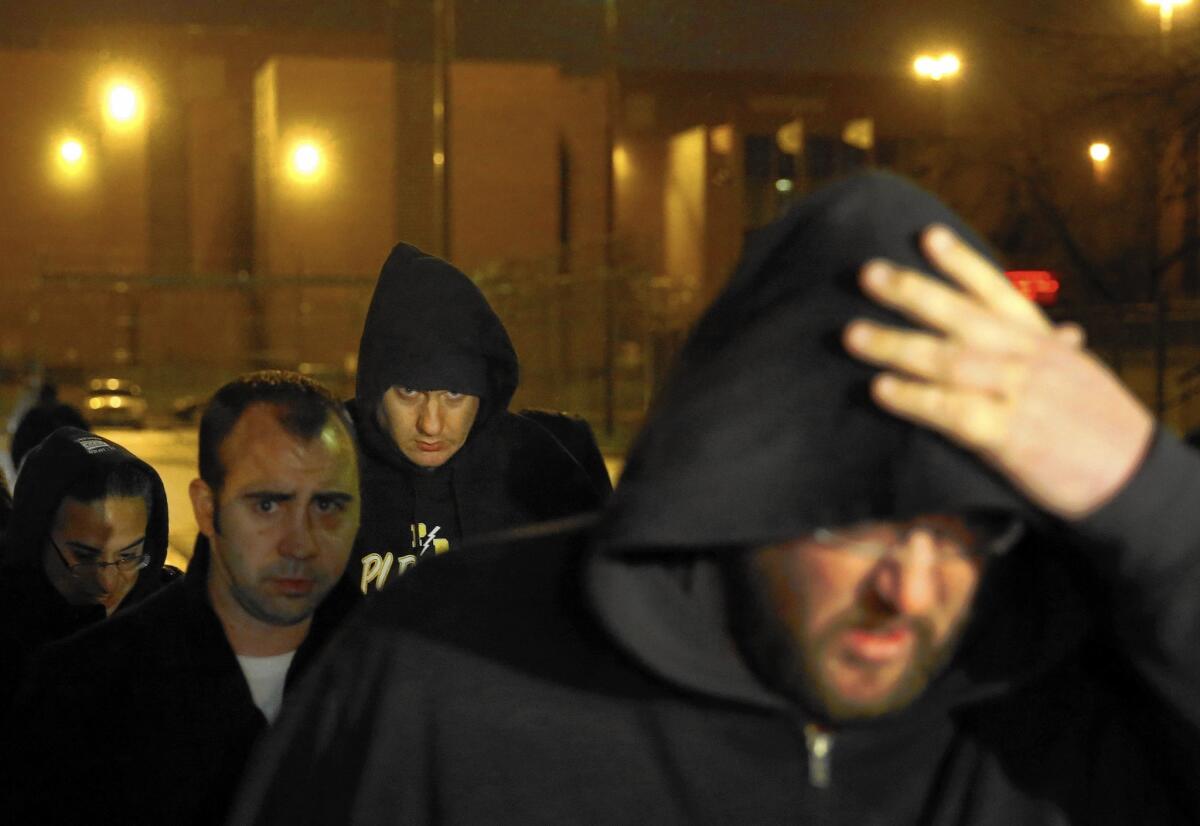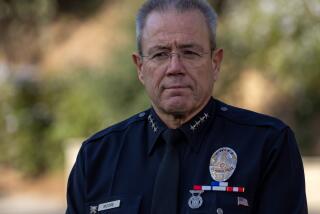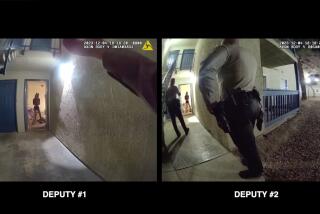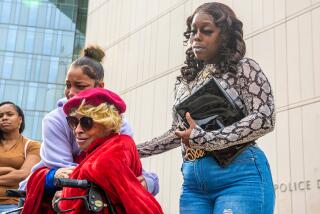Chicago police reports conflict with video of Laquan McDonald’s shooting

Chicago police Officer Jason Van Dyke, background center, is charged with first-degree murder in the October 2014 death of Laquan McDonald. Van Dyke said McDonald appeared to be a threat, but video of the incident shows the teen walking away when he was shot.
reporting from CHICAGO — Hundreds of pages of newly released Chicago police reports from the fatal shooting of Laquan McDonald are most striking for one simple reason: They are dramatically at odds with the dashboard-camera video that has sparked protests across the city, cost Chicago’s top cop his job and embroiled Mayor Rahm Emanuel in scandal.
The reports, released by the city late Friday, show that Officer Jason Van Dyke and at least five other officers said McDonald moved or turned threateningly toward officers, even though the video of the October 2014 shooting shows the 17-year-old walking away. The scenario sketched out by Cook County State’s Atty. Anita Alvarez in charging Van Dyke with first-degree murder also contends McDonald was walking away.
At least one patrol officer said that McDonald was advancing on the officers in a menacing way and swung his knife in an “aggressive, exaggerated manner” before he was shot and killed. Officers also said that even after McDonald had been shot by Van Dyke, the teen tried to lift himself off the ground with the knife pointed toward the officers, and though he had been mortally wounded, still presented a threat.
The reports, a collection of handwritten statements from the night of the shooting, and follow-up reports in the days and months after, often refer to Van Dyke as VD and call him the victim. McDonald is called O, for offender. Some reports are in police shorthand.
“VD believed O was attacking w/knife,” said a report of Van Dyke’s account. “Trying to kill VD. In defense of his life, VD backpedaled + fired. O fell to ground, continued to move/grasp knife. VD continued firing. O appeared to be attempting to get up, still holding knife. Pointing at VD.”
The statements prompted police supervisors to rule McDonald’s death a justifiable homicide just hours after he had been shot 16 times.
The reports — the first detailed accounts from the officers at the scene — offer a way to examine what Van Dyke and his colleagues say happened. Because they diverge so dramatically from the video of the shooting, they suggest one possible avenue for additional investigation.
The video, which prompted the city to pay McDonald’s family $5 million without it filing a wrongful death lawsuit, shows McDonald briskly walking down the middle of the street when Van Dyke fired from the teen’s left side.
In charging Van Dyke with first-degree murder, prosecutors said the officer began shooting six seconds after exiting his squad car, firing 16 rounds at McDonald in about 14 seconds as he was walking away, and was reloading when another officer told Van Dyke to hold his fire. For 13 of those seconds, McDonald was already lying on the street, prosecutors said.
The video did not show McDonald lunging toward officers as some of them said, although there appears to be a silver object in McDonald’s right hand. The autopsy on McDonald found that he had the drug PCP in his system.
The reports hint at how Van Dyke may try to defend his actions and explain a perceived threat. A day after the shooting, Van Dyke recalled a bulletin from the department that warned about knives that also shoot bullets. Included in the reports is a December 2012 bulletin about such knives, attributed to an unnamed “Midwest intelligence organization” that warned officers to “remain cognizant of its threat to personal safety.”
Van Dyke also told an investigator that he was aware of the dangers of spring-loaded knives and was familiar with the so-called 21-foot rule, which suggests a suspect armed with an edged weapon can injure an officer from that distance.
Federal officials also are investigating the shooting. A federal grand jury investigation has involved more than 80 witnesses and branched into possible obstruction of justice by the officers at the scene, sources told the Chicago Tribune. In particular, the sources said, federal prosecutors are investigating the officers who made statements as well as the officers who prepared the reports of the statements.
More to Read
Sign up for Essential California
The most important California stories and recommendations in your inbox every morning.
You may occasionally receive promotional content from the Los Angeles Times.










